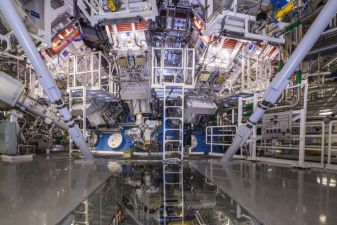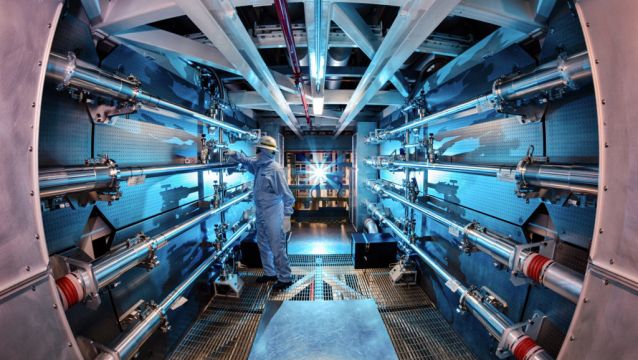US scientists announced a breakthrough on fusion energy on Tuesday, potentially a step toward one day harnessing the process that fires the sun to generate carbon-free electricity as the world struggles with climate change.
What is fusion energy?
Fusion occurs when two light atoms, such as hydrogen, are heated to extreme temperatures of 100 million degrees Celsius (180 million Fahrenheit) and then fuse into one heavier atom, releasing large amounts of energy. It is different from fission, in which a reactor shoots a neutron into an atom of uranium, splitting into two smaller atoms.
What did the scientists accomplish?
Using advanced technology, including one of the world's largest lasers, the scientists at Lawrence Livermore focused beams on hydrogen isotope target smaller than a pea, producing a fusion reaction that for an instant generated more power than it took to start.
Scientists outside the lab said that if the preliminary results are accurate, it represents progress on work that has been going on for decades, but that fusion is not yet anywhere near producing commercial-scale power.
Tony Roulstone, a nuclear energy expert at the University of Cambridge, said it the experiment seems to be a success because energy output released by the reaction was more than the energy delivered to the target from the laser. But the experiment's energy output was only 0.5 per cent of the vast amount of energy needed to fire the laser. "An engineering target for fusion would be to recover much of the energy used in the process and get an energy gain of double the energy that went into the lasers," Roulstone said.
Will fusion help fight climate change?
Potentially. Besides vastly ramping up the energy from fusion reactions, scientists need to produce them multiple times per second on a constant basis.
Scaling that process up to a power plant and building plants big enough cover a significant chunk of the world's growing electricity demand would take momentous efforts requiring materials, land and clear regulations for industry. Politicians supporting the existing fuels and infrastructure may be resistant to rapid change.
As the quest for fusion energy develops over a decade or potentially much longer, countries should continue aggressive moves into wind and solar power, energy storage, including batteries, next generation fission power and other alternatives to reduce dependence on fossil fuels, scientists and environmentalists say.

A big advantage of fusion is it will most likely produce little radioactive waste compared to fission.
What other kinds of fusion energy are being developed?
Private companies have raised about $5 billion from investors, from individuals to oil companies, and public funding, according to the Fusion Industry Association. Eight companies, including Focused Energy and First Light Fusion, aim to use lasers to initiate fusion reactions.
About 15 companies, including Commonwealth Fusion Systems and TAE Technologies, aim to use powerful magnets to confine fusion fuel in the form of plasma, a fourth state of matter that contains charged particles. About 10 companies are trying other methods, including a combination of magnets and lasers.







